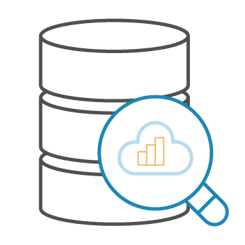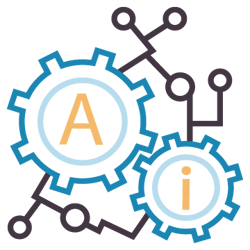In our December 2020 blog on AWS℠ Industrial, we noted that AWS and the other hyperscalers have always had the ambition to move up the value proposition and delivery stack. The hyperscaler’s objective is simple: to maximize the volume of dollars and services running through their platform. And, they incent their partners and their own salespeople to do so. They aim to win no matter which route one takes, directly through them or via their partners. We said that all roads lead to Rome.
Since publishing that blog, we have seen vendors take advantage of the hyperscalers, and in particular AWS and Microsoft℠, in the industrial space in three distinct ways:
- Leverage of the hyperscaler's platform and/or components
- Solution or product availability through the hyperscaler’s marketplace
- Integration of the vendor’s product or solution into the hyperscaler’s solution
Most solution providers use at least some portion of the hyperscaler’s platform, typically Infrastructure-as-a-Service (IaaS). The client usually chooses which provider and whether it is inside the client’s environment or external. Most large industrial companies keep solutions inside their firewall, especially if the solution provider’s application utilizes operational data and communicates with Level 3 or lower operational systems. Providers often utilize other components in the hyperscalers' stack, such as data storage, data lakes, analytics, and visualization. Some solution providers extend their hybrid footprint to the Edge, taking advantage of AWS Greengrass or Azure IoT Hub.
Marketplace Muscle
Both Microsoft and Amazon report more than 17,000 solutions in their AWS and Azure marketplaces, respectively. The key advantages of being in the marketplace are access to pricing and the ease of buying. Most solution providers provide a pricing schedule so prospects can evaluate offerings. But more importantly, being in the marketplace makes buying easier because:
- The solution can be bought through the established hyperscaler’s procurement contract, meaning the time for the solution provider to go through the procurement process is significantly shortened.
- The solution is compatible with the hyperscaler's infrastructure environment, meaning, less or potentially no customization to fit into the client’s environment.
LNS Research has observed that hyperscalers now have access to the CIO and CFO and occupy the IT mindshare that ERP systems used to dominate from the late 1990s to more recently, despite the continued considerable spend on ERP. As a result, solution providers can leverage this access to get on the client’s radar screen more rapidly and into IT’s planning and budgeting cycle. It also makes it easier for other buyers in the client’s organization to acquire solutions that have already passed the IT checklist. LNS Research calls this, Riding the Hyperscaling Wave.

Who’s Doing What, Why, and How?
To illustrate, let’s take a look at two companies that have ridden both the AWS and Azure waves, and one that exclusively runs on the Azure wave: Seeq®, Element, and Uptake® respectively. First, we should note that most solution providers support Azure and AWS, not limiting themselves. In addition, many large clients support both platforms despite having a preference for one over the other. The examples below show how the solution providers are integrating their offerings into the hyperscalers' platforms and solutions.
Seeq®
Seeq is a leading self-service application for advanced analytics with process and IIoT (time series) data. It started with support for on-premise deployments, replacing Excel usage by process engineers for customized operational analytics. Seeq has since grown into an analytics solution with enterprise deployments with thousands of users. Seeq supports SaaS deployments on hyperscaler clouds with or without a DataOps contextualization layer in the architecture.
Seeq has extensively leveraged both the AWS and Azure Marketplaces, with many of its sales executed through these marketplaces where they count against customer MACC or EDP commitments. In April 2021, Seeq announced a new offering on AWS to accelerate access to manufacturing data for AWS analytics on industrial data. The Seeq AWS Glue integration for Enterprise Historians is a data integration service that makes it easy to discover, prepare, and migrate data to the cloud for analytics, machine learning, and application development. Seeq has also released native connectors for Azure data stores such as Azure Data Explorer (ADX) and has integration with Azure Machine Learning for large manufacturers that are bringing more and more process and IoT data to Azure
Element
Element, formerly Element Analytics, provides a DataOps infrastructure called Element Unify. Unify provides a metadata system of record that unifies operational data with data from other IT systems by capturing, managing, and governing the associated context (or metadata). Unify has functionality specifically for integrating with OSIsoft℠ Asset Framework (AF), reusing its hierarchies and templates. Unify also works with other historians like Aspen Infoplus.21®. Element Unify is available on the AWS and Azure marketplaces.
In June 2021, Element announced an integration with AWS IoT Sitewise™ to provide their industrial IoT customers with the ability to collect, store, organize and monitor data from industrial equipment at scale. Element Unify integrates and contextualizes metadata from IT/OT in single-site, multi-site, multi-instance deployments, so data model(s) can be deployed to AWS IoT SiteWise. Additionally, this enables metadata to be imported into IoT SiteWise from the customer's systems, including Inductive Automation Ignition and PTC KepServerEx™. Unify is vendor-agnostic, supporting interoperability across platforms and provides the ability to reproduce PI AF in Azure TSI, PTC Thingworx™, Snowflake, and OSIsoft Cloud Services.
UPTAKE®
Uptake is a rapidly growing industrial IoT (IIoT) and AI/ML company that serves a broad set of manufacturing and process industries in addition to defense and heavy equipment dealers. They started as an IIoT platform and then acquired APT’s Asset Strategy Library (ASL℠), enabling them to apply AI/ML to all types of assets. In 2021, they acquired a Canadian company, ShookIOT™, led by Dr. Dave Shook, which added a DataOps infrastructure layer to their platform, enabling all types of data and data models to be made available to their analytics applications. The ShookIOT product was renamed Uptake FusionTM and is available as a standalone product or in combination with Uptake analytics solutions.
What is unusual about Uptake Fusion is that it is not only integrated with Azure and is available on the Azure marketplace, but in fact, is built specifically for Azure leveraging Azure Time Series Insights, Microsoft’s fully managed analytics, storage, and visualization service. Thus, Uptake Fusion uses the Time Series Insights database, not its own or another third-party storage. In addition, Uptake Fusion has connectors to multiple systems and, like Element, can absorb existing meta-data structures, such as asset hierarchies in traditional historians, including OSIsoft’s PI AF.
Hyperscalers
Both AWS and Azure are doubling down on their manufacturing industry investments with hundreds of new hires and open headcount, new roles for manufacturing and vertical market leadership, and industry-specific cloud offerings and services. For example, AWS Lookout™ for Equipment for predictive analytics on assets or Microsoft Cloud for Manufacturing, AWS Timestream, or Azure Data Explorer (ADX) for time series data storage. Even Google® has a renewed focus on manufacturing. Thus, solution providers can now ride the hyperscaler wave, which is only getting bigger and carrying more momentum into the industry.
So, we can see how these solution providers take advantage of the marketplace and have infused themselves into the hyperscalers' offerings, some providing connectivity, added functionality, and in the case of Uptake Fusion, directly incorporating the hyperscaler’s services into its product.
What’s Next?
In summary, we can see how some solution providers survive and thrive in the age of the hyperscaler elephants who are rumbling ever closer in the industrial space. The best of the bunch have figured out how to grow under the ever-increasing hyperscalers’ shadow:
- Use deep domain knowledge and capability to differentiate
- Add functionality to the hyperscaler’s platform that the hyperscaler is unlikely to build themselves
- Leverage the hyperscaler's access and reach to plow the lead generation field and quickly harvest the orders
So, it’s either learning to dance with the elephants or get run over by the herd. Who would have thought elephants could be springboards?

The views and statements expressed in this blog represent the opinions of the author(s) based on his/her/their industry experience and interpretation of any information collected using the methods described in our Research Integrity. All product and company names are trademarks™ or registered® trademarks of their respective holders; use of them does not imply any affiliation with or endorsement by them.